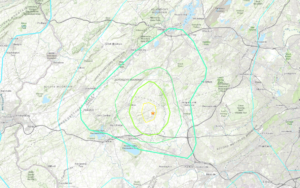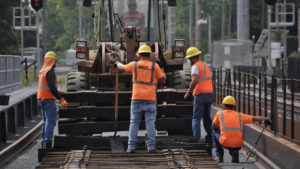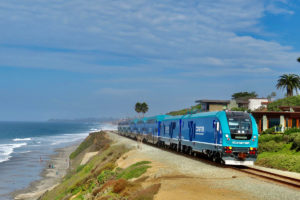Pumping up rail Pennsylvania freight capacity a heavy load
Written by jroodPennDOT says moving freight by rail eases congestion on highways, saves fuel costs and, with some enhancements to the current lines, the state could improve upon its position as an important crossroads for the rest of the country, the Beaver County Times reports. A PennDOT study released earlier this month outlines what officials hope will be the future of the rail industry-freight and passenger-and spells out what needs to happen to achieve the goals the report sets for 2035. And while the report makes it clear that many of the goals must be achieved by both sides of the industry, it sets a few priorities for specific improvements that will help improve freight rail in the state.
"A big part of the study
was assembling a complete inventory of rail services from both modes in the
state," said PennDOT spokeswoman Erin Waters. "When you look at the report, you
get a good sense of how important the freight mode is in Pennsylvania; you also
get a good idea of what we need to do to make improvements."
Pennsylvania already has
some advantages that make it the fifth-largest railroad system in the country.
Most of the 6,000 miles of track in the state is privately owned by one of four
railroads: Norfolk Southern, CSX Transportation, Canadian Pacific Railway and
Bessemer and Lake Erie Railroad Company. The study says the state also has the
largest number of shortline railroads-34 Class II or III operators,
specifically-in the country, a plus for manufacturers trying to move goods to
larger terminals.
Pennsylvania also has
nine intermodal terminals, important connections between rail lines and
trucking companies that share the large intermodal containers, and seven port
terminals, which can connect trucking, trains and river transportation. One of
the latter centers is the Neville Island Freight Cluster, owned cooperatively
by 19 property owners, which has easy access to rail, Ohio River barges and
Interstate 79.
"It’s pretty clear from
the study that we don’t have to start from scratch," said Shannon O’Connell,
spokeswoman for regional planning group Southwestern Pennsylvania Commission. "But
there are a few things we need to take care of to make sure we continue to be
in a good position."
When rail service
declined in the 1970s, the quality of track and facilities declined as well.
The study says the larger railroads have the revenue to keep up with
maintenance, but the smaller lines do not. And with the industry switching to
larger, heavier cars, many of those shortline railroads don’t have the track
they need to properly support the cars.
"Installing track that’s
286K-compliant will be a very important investment if we are going to take
advantage of what we already have here," Waters said, referring to the new cars
that weigh 286,000 pounds. "Those will be important connections to make,
especially if we want to be in a position to promote the growth of
manufacturing and agriculture in Pennsylvania."
Another limitation is the
state’s problem with double-stacked cars, or those that can handle two
intermodal containers stacked on a single car. Demand for new capacity is
growing, and double-stack trains are one solution, but there are too many
bridges and overpasses that don’t have the clearance for the larger cars.
"We’re talking about a
huge investment in infrastructure to make the changes we need to get
double-stacked cars across the state," Waters said. "As it stands right now,
there are too many choke points – places where those cars cannot travel – for
us to be able to grow like we’d like to."
The necessary
improvements will come down to finding the necessary funds. And while the Obama
administration has showed a renewed interest in the rail industry, much of the
attention-and much of the recently awarded grant money, like the $8 billion
awarded in January-focuses on passenger rail systems.
"The level of private
investment that will be required is huge, but we’re fortunate in that the Class
1 railroads in Pennsylvania have been willing to be involved," Waters said.
Officials at the
Association of American Railroads refused to comment on the study, but a recent
report prepared by the industry group seems to say its members, North American
Class 1 railroads and Amtrak, are willing to make those investments. The AAR
study said freight railroads invested $9 billion in system improvements in
2009, a year when freight traffic declined dramatically because of the
recession.
"Freight rail is the only
mode of transportation that is almost entirely self-sustaining," Edward
Hamberger, the association’s chief executive officer, said in a statement about
the group’s report. "We sustain a healthy national rail system with private
capital and we also deliver tremendous public, economic and job benefits to
American businesses and consumers."
"Funding is the big
question mark," O’Connell said. "With good planning-like what we see with the
PennDOT report-and cooperation, I think we can come up with a mix of public and
private funding to make these things happen."





